|
Academy
|
www.onthewaymodels.com |
GMC CCKW-353 |
|||
| Set #: Academy 13402 | Review
Carli
Danilo
172normandyafv(at)gmail(dot)com Edited by Marc Mercier |
||||
|
Academy
|
www.onthewaymodels.com |
GMC CCKW-353 |
|||
| Set #: Academy 13402 | Review
Carli
Danilo
172normandyafv(at)gmail(dot)com Edited by Marc Mercier |
||||
Since I wanted another US Army truck, I bought the Academy kit to get an early production closed cab. The closed cabin CCKW has also been produced by other brands such as PST, Force of Valor and Pegasus (the last one with post war radiator grills). In the
box you get two dark pine green sprues, a transparent set, a decal
set and some instructions. A third sprue has some extras : boxes,
jerrycans, barrel and MG’s to fill the cargo area. At first
glance, everything looks very well done: the parts look crisp and
well depicted. The plastic is a bit hard but can be worked very well.
Dimensions are correct: |
|
Dimensions
are correct: |
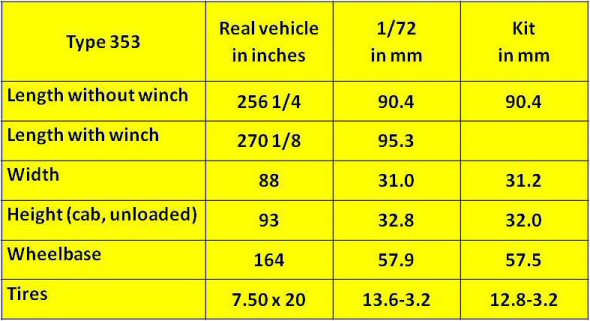 |
The variant proposed in the kit has a closed cab with a wooden type body, produced until February 1943 (when the asymmetrical brush guard was introduced), proceeding the introduction of the open cab of the late production (4th, 5th and 6th series). The supply catalogue number for the truck 2 ½-ton, 6x6, GMC CCKW was G508. The 1st batch, produced from December 1940 till January 1941, had a civilian cabin and was called CCKWX. The 2nd and the 3rd series were produced January 1941 to March 1943 and their closed cabin could have a rounded hole for the MG. Two types of chassis were used for the CCKW, the type 353 (used in this kit), was the longer one. The shorter version, used for about the 10% of the CCKW production, was called type 352. Another closed cab version, called CCW-353, was a 6x4 variant. The kit gives you the option between the standard bumper and installing the winch, which was used on almost half of the total production (both chassis type, short and long). The kit chassis has a Timken split axle. The Chevrolet banjo type was also used, but this different axle type meant also a different layout of the drive shafts. Compared to the open cab truck kit, the conversion possibilities are even bigger (see Heller/Airfix CCKW review for a short wheelbase 352 conversion) because the closed cab truck kit could also be converted (with some more work) into the 1.5 ton 4x4 variant G506 made by Chevrolet. The 108”x 86” flatbed cargo G506 with the winch was called G7117, G7107 being the number without winch. Good
info sources of information on the net can be found on dedicated sites
such as www.cckw.org
or www.gmccckw.nl
, here www.ww2cckw.org/jimmy_ancestry.htm,
you can find a very interesting article in ten parts and last but
not least, the technical manual TM 9-801 and TM 9-224 are full of
useful info too. A lot of ejector marks need to disappear. The kit doesn’t provide a tarpaulin, so I couldn’t measure the body height. Here is what I made to improve my closed cab truck: Chassis |
|
|
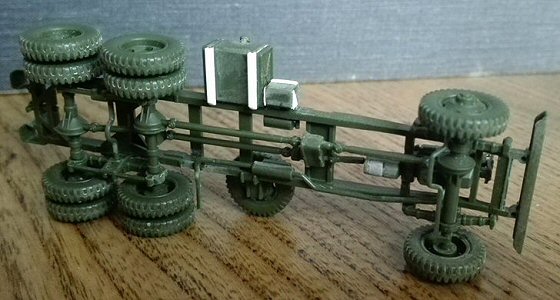 |
Cab |
|
|
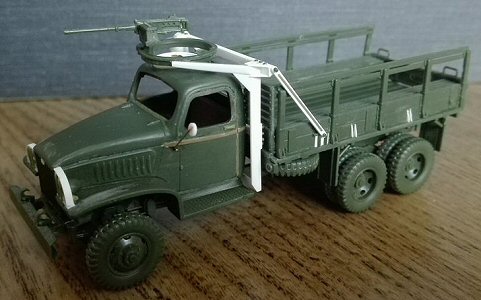 |
|
 |
|
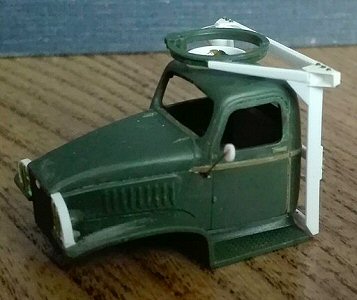 |
|
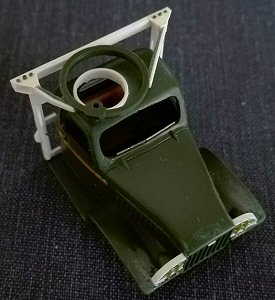 |
|
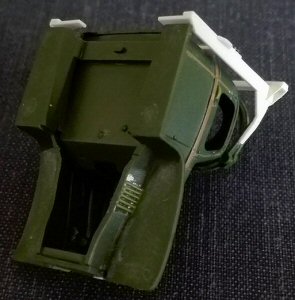 |
Body
|
 |
|
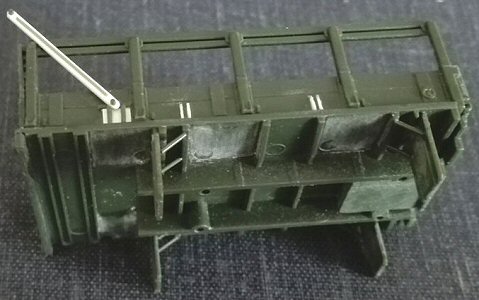 |
|
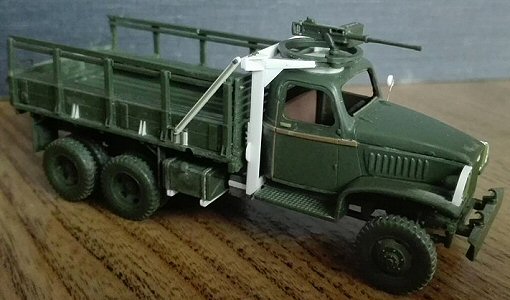 |
|
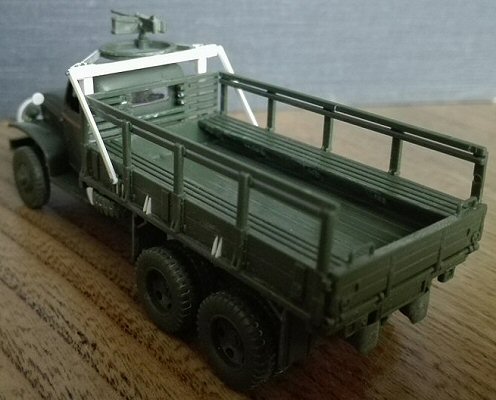 |
M37 mount The AA MG mounts for the closed cab were the types M32 and M37. The kit proposes the M32 type, but it isn’t correctly reproduced and if used, should be modified. According to the photos I consulted, this type was only fitted to steel bodied trucks, while this kit has a wooden body. The vertical rods were rounded with rectangular fixing plates, the horizontal arms were triangular and the oblique rods were plain triangles which formed a rhomboid shape with the forward triangular plate. An interesting article can be found in the French magazine Vehicules Militaires # 55, February/March 2014. For my closed cab truck, I choose to make a M37 mount, which could be used for both long and short wheelbase chassis. It was made in four variants; the type used on a 353 chassis with wooden body was the M37A2 (there were difference in the way it was fixed to the walls between the wooden body and the steel one). The frame wasn’t attached to the body as for the M32, it had a different shape and the ring supports were shorter. |
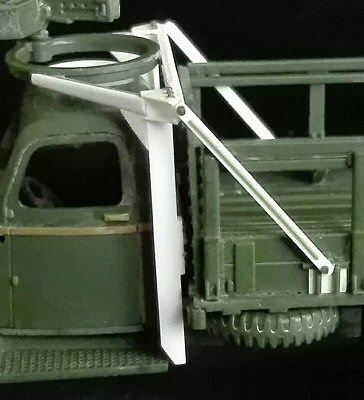 |
I didn’t find the technical drawings so I had to scale it down from photos and sketches. To make it I used plastic strips and stretched sprue. Surely some dimensions are not 100% correct (I had also to adapt some dimensions to the kit parts) despite this, I prefer my solution because it is the only mount type of which I found photographic evidence being used on the wooden bodies. The only alternative to having an unarmed truck would be to use the improved M32 mount on a metal body, taken from another kit. |
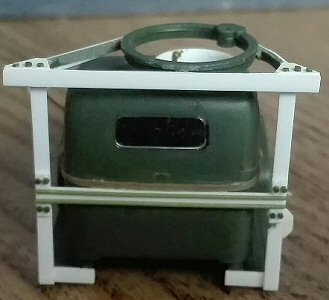 |
Decals I didn’t find any photos of the two trucks suggested by the decal set: |
|
|
|
|
|
Conclusions Just
like the Dodge WC54 kit, this Academy kit also left me with a strange
impression. It may seem a very good kit, but it has detail issues
which need heavy surgery if corrected and other ones which need to
be replaced. Preview sample purchased by the author. |
|
Back to : |
Back to Home Page |
Article Last Updated: 06 May 2018 |